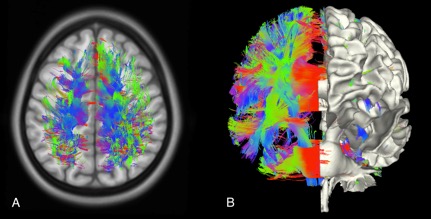Neuroimaging
Doctors and neuropsychologists use neuroimaging to diagnose and treat brain injuries and disorders. Neuroimaging includes various types of brain scans, including images of the anatomical structure such as CT scans and MRIs. It also includes functional and metabolic imaging of how the brain responds to tasks or stimuli, measuring blood flow in the brain and brain metabolism.
Johns Hopkins All Children’s Hospital uses neuroimaging to diagnose and treat disorders of the brain, spine, neck and central and peripheral nervous system. We specialize in non-invasive imaging technology, which allows us to study whole-brain maps of structural and functional brain connections.
Our world-renowned team of experts brings decades of clinical and research leadership in the treatment of neurologic diseases, including brain tumors, brain malformations, spine disease, stroke and other vascular disorders.
The Johns Hopkins All Children’s neuroimaging team, together with the molecular determinant core, apply the latest technology to improve patient care including Multi-Omics studies such as connectomics, metabolomics and proteomics to examine the brain and the changes related to the central nervous system reorganization.
Conditions We Treat Using Neuroimaging
- Anxiety disorders: posttraumatic stress disorder (PTSD) and obsessive-compulsive disorder (OCD)
- Brain and spinal cord tumors
- Brachial plexus injury
- Concussion
- Congenital malformations of brain and spine
- Epilepsy
- Hydrocephalus
- Pediatric stroke
Scans/Imaging
-
Computed tomography (CT) creates detailed images of internal organs, bones, soft tissue and blood vessels.
 3-D tractography of the brachial plexus
3-D tractography of the brachial plexus - Connectivity and tractography analysis is used in pre-surgical 3D white matter fiber visualization and helps neurosurgeons plan for surgery. In addition, this technique helps us understand specific outcomes a brain lesion has on neural network.
- Magnetic Resonance Imaging (MRI) allows us to assess the structure and function of the central nervous system.
-
Metabolic imaging, such as positron emission tomography (PET) scans, show us how organs and tissues are working.
 Whole brain tractography with hemi-brain surface
Whole brain tractography with hemi-brain surface - Structural, metabolic and functional imaging allow us to use multimodality techniques to merge images, whether the images were taken at different times then fused together or taken at the same time.
-
 Networks in anatomical space: structural connectome, a graphical model of a brain network
Networks in anatomical space: structural connectome, a graphical model of a brain network - Diffusion tensor imaging (DTI) of the brachial plexus and spinal cord allow us to better evaluate pediatric injuries.
- Magnetic resonance spectroscopy (MRS) is modality of metabolic imaging that identifies metabolites. For example, when looking at a tumor, this imaging helps differentiate low and high-grade lesions. These scans also detect tissue changes in stroke and epilepsy patients.
- Magnetic resonance (MR) perfusion is a technique where a contrast agent is used to measure cerebral blood volume, cerebral blood flow and mean transit time. This can add important information about potential salvageable brain tissue in stroke patients and help differentiate low and high-grade tumors.
- Arterial spin labeling (ASL) perfusion is a non-invasive MRI technique used to measure the brain perfusion at the tissue level.
- Functional magnetic resonance imaging (fMRI) measures blood oxygenation changes that occur in the brain. These images could be used to determine which parts of the brain are handling critical functions or to evaluate the effects of a stroke or disease. Additionally, this technique is crucial for pre-surgical planning in patients with epilepsy or brain tumor.
Equipment and Software
1.5 and 3 tesla scanners produce high-quality DTI and resting state fMRI. Our high-performance neuroimaging research lab includes advanced hardware and post-processing software for connectome analysis.
Neuroimaging Research
The neuroimaging research mission is to improve the ability to diagnose pediatric neurologic diseases and to advance our understanding of how diseases affect the brain. We also hope to use neuroimaging to track measurable indicators that predict neurodevelopment, cognition and behavior in childre
Meet our Neuroimaging Team
Javier Quintana, M.D.
Radiology
Dr. Quintana is a radiologist at Johns Hopkins All Children’s Hospital. He joined hospital staff in 2010. Dr. Quintana earned his medical degree at the University of South Florida. He trained in general pediatrics at Jackson Memorial Hospital/University of Miami and completed a diagnostic radiology residency at Geisinger Medical Center in Danville, Pennsylvania. Dr. Quintana completed a pediatric radiology fellowship at Children’s Hospital of Philadelphia. He is fluent in Spanish.

Contact Us
Need to make an appointment or refer a patient? Please contact us.

